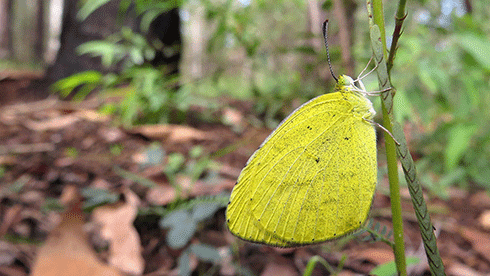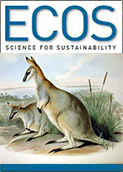
|
Published: 16 June 2014
Re-examine assumptions for measuring biodiversity, study advises
Species thought to be ‘safe’ and not under threat could be going extinct without scientists realising it, a new study published in Nature Communications has found. Inherent inconsistencies and inaccuracies in current biodiversity assessment techniques may be the cause.

|
| Large Grass Yellow Butterfly, Skillion Nature Reserve, NSW. |
Dr Martin Westgate from the Fenner School and Environment and Society at the Australian National University (ANU) led the research, which compared data from biodiversity studies around the world.
The research team found that efforts to protect endangered species may be rendered ineffective due to the difficulties of measuring numbers of species, and that new methods are needed to quantify biodiversity.
In the absence of adequate data about species’ distributions, policymakers are currently forced to estimate areas of high biodiversity through a range of techniques. One method is to count a well-known group, such as birds, and assume they represent the diversity of other groups.
Dr Westgate’s group compared different such estimation methods and noticed that, for example, studies at different latitudes or spatial scales rarely find similar results even when they consider the same groups of plants or animals. This is because the studies are built on assumptions that do not hold in all circumstances.
To date, around 1.5 million species have been described on Earth, but many more remain undocumented.
Estimates of the total number of species on our planet vary, but have been as high as 100 million species. Without knowing where these species can be found, preventing them from going extinct can be difficult, or even impossible.
One of the paper’s co-authors, Dr Philip Barton, said biodiversity loss is a global problem with huge implications for human well-being.
‘Measuring biodiversity and understanding how it is distributed across the globe is a complex science, and our study shows us where more work needs to be done.
‘Our results were very surprising, but they open up huge possibilities for future research.’
Source: ANU



